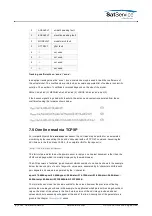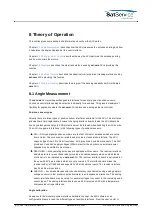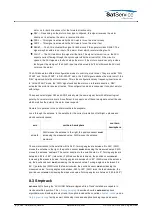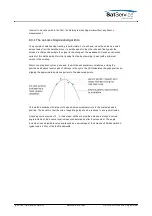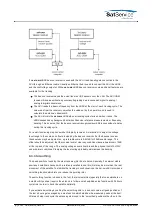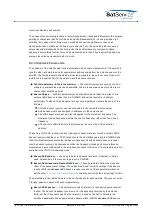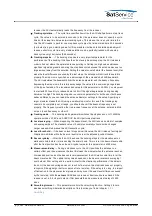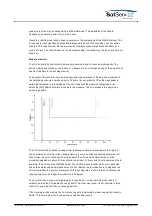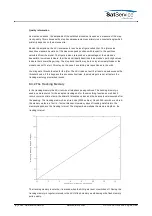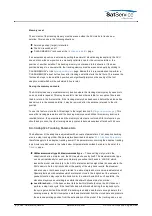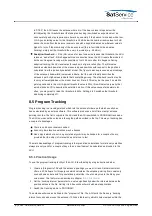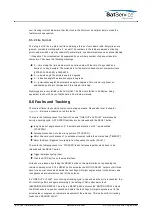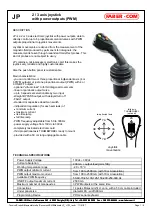
to 'STEP', the ACU leaves the antenna where it is if the beacon level drops below the
limit.Adjusting the threshold level that adaptive tracking is switched as expected must be
done carefully and may require some iterations, specially if the beacon is received with a low
C/N. A good starting value for the threshold is 10 dB below the nominal receive level or 2 dB
above the noise floor the beacon receiver sees with a depointed antenna, whatever value is
higher.To turn off the monitoring of the beacon level (this in fact inhibits the adaptive
tracking), simply set the threshold the a very low value (e.g. -99 dBm)
Peakjitterthreshold --- If the jitter value of at least one axis exceeds this threshold, the ACU
raises an 'model fault'. If this happens three consecutive times, the ACU resets the models of
both axes. Adaptive tracking will be possible not until 6 hours after this happens.During
adaptive tracking, the ACU evaluates for each axis a figure called jitter. The jitter value
describes standard deviation of the measured peak positions with respect to the positions
calculated from the (currently selected) model. The figure is also expressed as a percentage
of the antenna's beamwidth, low values indicate, that the model ideally describes the
antenna's path. High values indicate that's something wrong. The step track results may be
to noisy at low amplitudes or the model does not fit at all. This may be the case if a satellite
gets repositioned in the orbit.A typical threshold value is 20%, this will detect very early that
a model does not fit to describe the satellite's motion. If this value causes false alarms too
often, you may want to raise the threshold to 50%. Setting it to 0 switches the threshold
monitoring completely off.
Program tracking is a tracking method which lets the antenna follow a path which usually has
been calculated by an extern software. This software produces a list of time stamp / antenna
pointing records. The list is copied to the ACU and the ACU is switched to PROGRAM track mode.
The ACU now moves the antenna following the path described in the file. This way of tracking has
a couple of advantages:
There is no beacon receiver needed.
Even very low elevation satellites may be tracked.
Also objects which are not in a geostationary orbit may be tracked for a couple of hours,
provided that the object of interest does not move to fast.
The main disadvantage of program tracking is that prediction calculations for stationary satellites
always are only valid for a couple of days, then a new file must be calculated and loaded to the
ACU.
To use the program tracking facility of the ACU, follow the step by step instructions below:
1. Create a "program.txt" file with the antenna pointings you want to track. SatService GmbH
offers a PC Software for this purpose which calculates the antenna pointing from commonly
used ephemeris data sets for geostationary satellites. You also may create the file by your
own means. The file format is described in chapter
'8.5.2 File Format'
.
2. Set the 'tracking interval' parameter to a value significantly below the intervals between the
position entries in the file. Setting it to 60 seconds will work with most applications.
3. Switch the 'tracking mode' to 'PROGRAM'.
The antenna will move as defined in the "program.txt" file. The ACU polls the file every 'tracking
interval' seconds and moves the antenna if it finds a table entry which is time stamped within the
(C) 2022, SatService GmbH
www.satnms.com
ACU-19V2-UM-2209 Page 63/65


